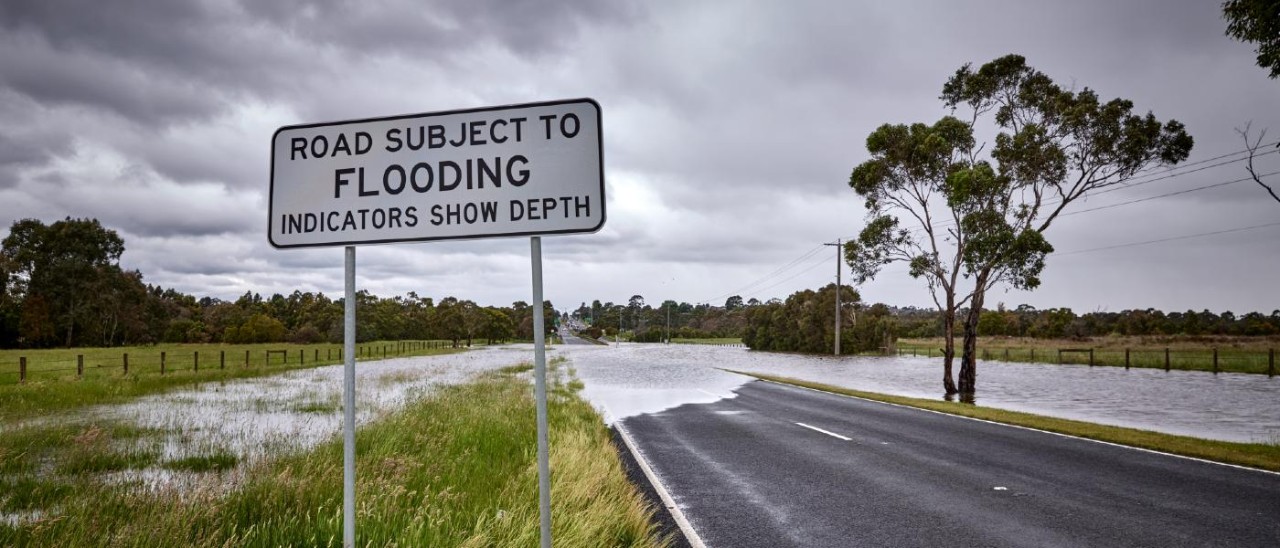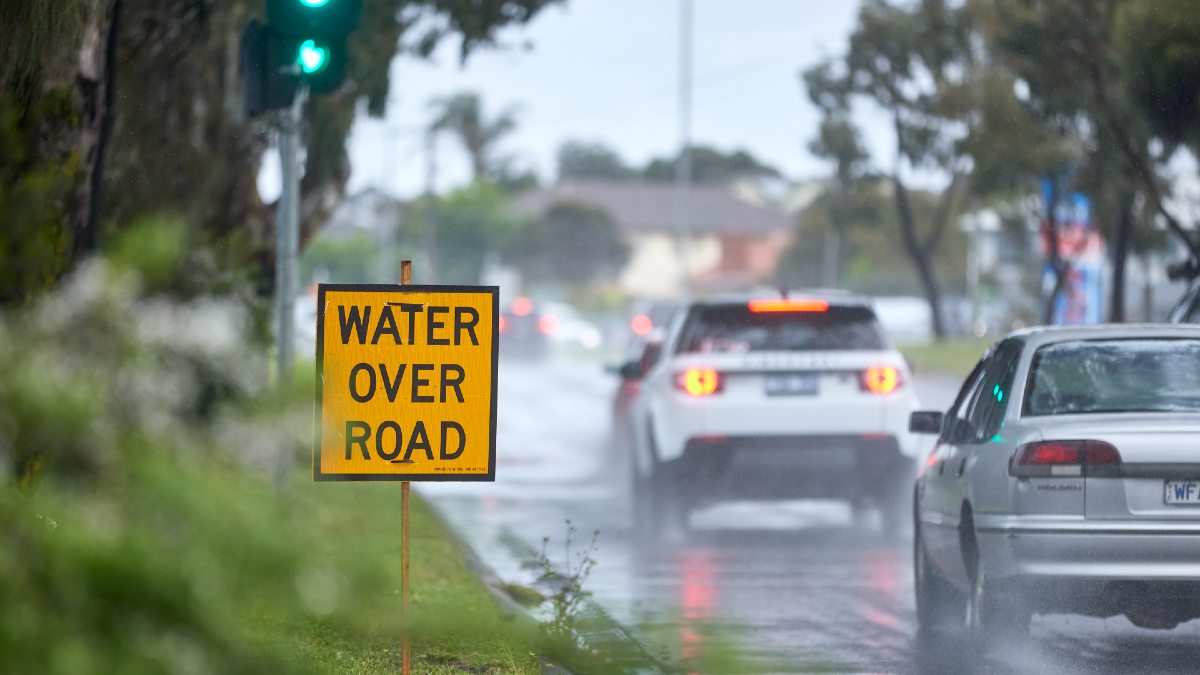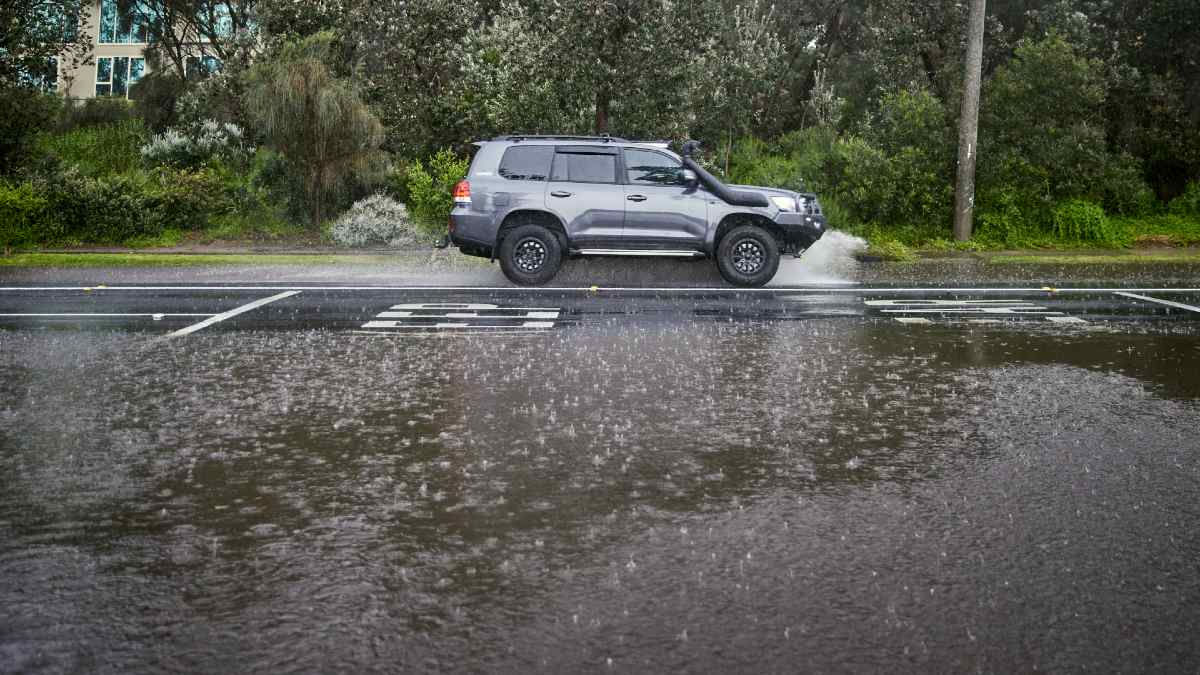If you are involved in a serious road crash, many cars in Australia will automatically place a call to an emergency response centre. So why do so few people know about eCall and why isn’t it mandatory in all vehicles?
Why it's unsafe to drive through water on the road

Just 15cm of slow-moving water can move your car. Find out why it's so dangerous to drive through water, and why this action should be avoided at all costs.
In Australia, flooding ranks as the second most deadly natural disaster after heatwaves, with the decision to drive through flood waters causing more than half of unintentional flood-related deaths, according to the National Road Safety Partnership Program (NRSPP).
What's more, in Victoria, the VicRoads Learner Handbook doesn't provide information about driving safely around flood waters.
RACV Drive School Driver Education & Development Manager Silvia Morris warns that driving through flood waters "is a dangerous and life-threatening decision", regardless of the size or type of vehicle you're driving, be it a mini coupe or large SUV, or internal combustion engine (ICE) vehicle or an electric vehicle (EV).
Here’s what to do if you find yourself in a flooded or flood-prone area, and how to best prepare before finding yourself in unsafe territory.
Stay up to date via the VicEmergency website or app and check VicTraffic for road closures and hazards during storms. Call Victoria State Emergency Service (VICSES) on 132 500 for assistance or Triple 000 in an emergency.
Why is it unsafe to drive through water on the road?
The Victorian State Emergency Service (VICSES) has released a campaign called 15 to Float to educate motorists about the very small amount of flood water that is needed to move a car.
A standard one-tonne small hatch or coupe can float in as little as 15cm of water, while a large 2.5-tonne 4WD can float in as little as 45cm. For context, that’s below knee-height for an adult.
While moving flood waters can cause your vehicle to lose traction and wash away without much difficulty, what bellow the surface of the water is of equal concern.
"You may not be able to see other hazards in large bodies of water, such as large potholes, or debris," says Morris.
From a distance, flood waters may not appear to be too high or dangerous, but are often deeper and faster-flowing than they appear. Severe flooding over large areas can include harmful chemicals, debris and even animals - all of which can cause severe illness and injury.
Even if you're able to drive through a flooded road, you’re still not safe. The moisture on your brake pads can seriously impair your ability to brake suddenly.
If you find your car has been sitting in deep water, do not attempt to drive it, as the car’s electrics may have also been compromised impacting critical safety equipment. It's best to contact your insurer for assistance to navigate the next steps.
What is aquaplaning? How does aquaplaning happen?
Also referred to as hydroplaning, aquaplaning is when a layer of water on the road builds up between the surface of road and the vehicle’s tyres, causing the tyres to lose grip on the road.
Aquaplaning then causes the driver to lose control of the vehicle, including steering, braking, and acceleration. The risks are exacerbated by speed and tyres with poor tread.
To help reduce the chance of your car aquaplaning, maintain your tyres and tyre pressure, and ensure the tread depth is up to the legal standard.
If your vehicle starts aquaplaning, avoid braking, and slowly ease off the accelerator. Maintain straight and steady control until traction with the road surface returns.

Maintain a safe braking distance when driving on wet roads. Image: Matt Harvey
Driving through flood water: why do people do it?
Despite the high risk of harm to both vehicle and people, studies have found that motorists may make an unsafe decision to drive into flood waters for several reasons, including to evacuate or get home to rescue family or pets.
Social pressure, according to the NRSPP, is also a major contributing factor, including being late to work or school, feeling pressured by passengers or other drivers, or seeing other motorists successfully driving on a flooded road.
"It’s best to set a good example, as people are more likely to drive through flood waters if they see others doing it; do not encourage this behaviour by doing it yourself," says Morris. "By choosing not to drive through it, you may not only save yourself, but you can lead by example and help keep others safe too."
What happens if your car is stuck in flood waters?
If you find yourself coming up to a flooded area, even if you're experienced in driving in inclement weather, Morris advises to steer clear. "If in doubt, stay out," she says. "In extreme weather conditions, choose to postpone your journey. It’s just not worth the risk to put yourselves and others in danger."
If you find yourself driving in heavy rain with wet roads, it’s best practice to:
- turn on headlights when visibility has been reduced
- reduce speed
- keep an eye out for changing conditions, such as flash flooding
- stop before a road that is flooded or covered in a large body of water.
If other vehicles are on the road, drivers should keep at least four to five seconds' distance from the car in front, in order to give your car time to break safely.
If you unexpectedly find yourself on the road during an extreme event, the safest thing to do is to drive somewhere safe, like higher ground, and wait for conditions to improve.
For emergency assistance, call VICSES on 132 500, and signal to others for help if needed. If the situation is life-threatening, call Triple 000.

No matter what vehicle you drive, if a road is flooded you need to find an alternate route. Image: Matt Harvey
Flood prevention measures
If you're in an area that is at risk of flood, ensure you have adequately prepared your home and evacuate if instructed to do so.
If you're in a high-risk area, ensure you have taken adequate steps to prepare an emergency flood plan, having a prepared home emergency kit with your important documents, and monitor severe weather events though VicEmergency.
Plan your route before driving with Arevo, which provides up-to-date information on road closures and flood warnings.
The information provided is general advice only. Before making any decisions please consider your own circumstances and the Product Disclosure Statement and Target Market Determinations. For copies, visit racv.com.au. As distributor, RACV Insurance Services Pty Ltd AFS Licence No. 230039 receives commission for each policy sold or renewed. Product(s) issued by Insurance Manufacturers of Australia Pty Ltd ABN 93 004 208 084 AFS Licence No. 22767.


